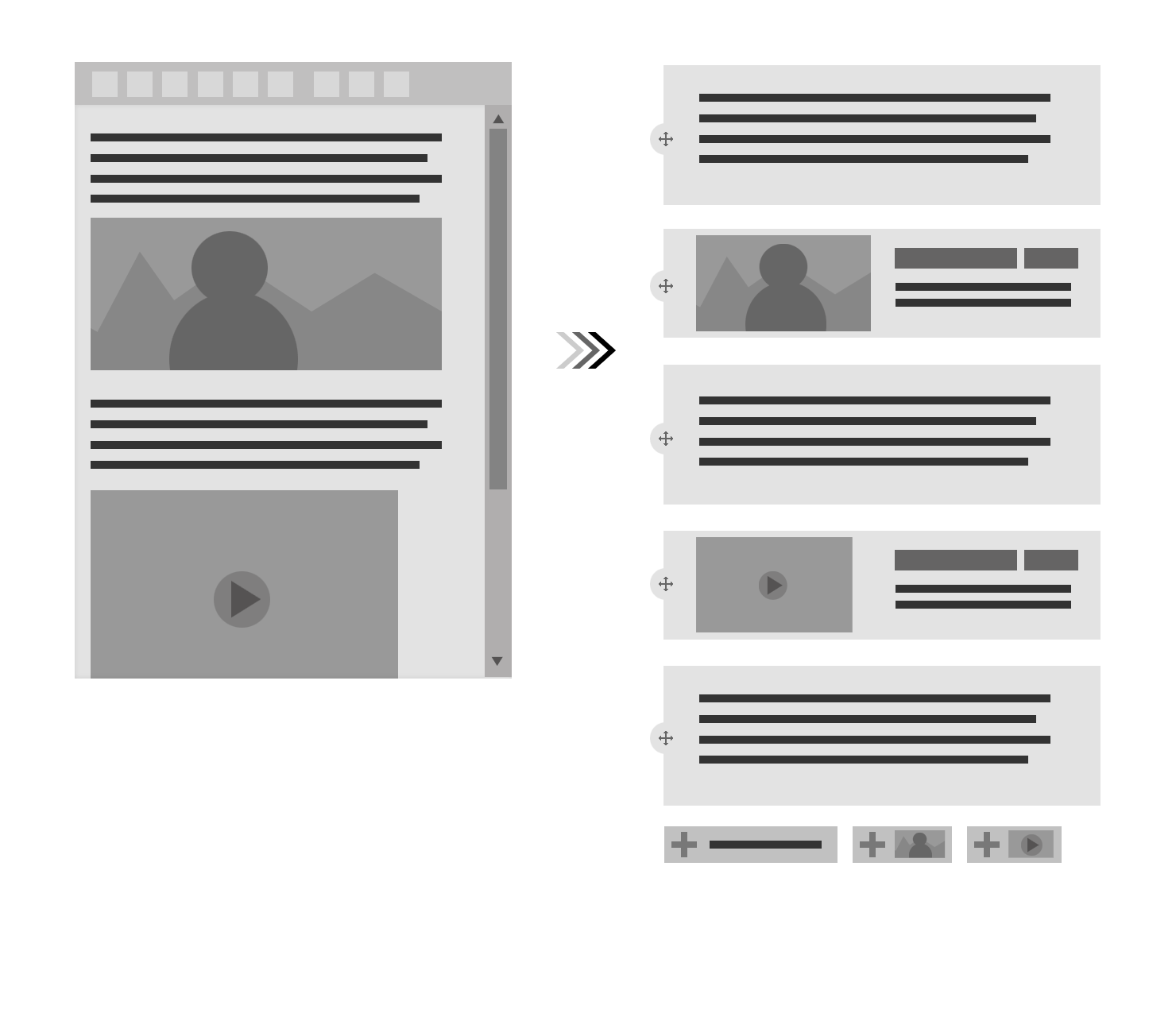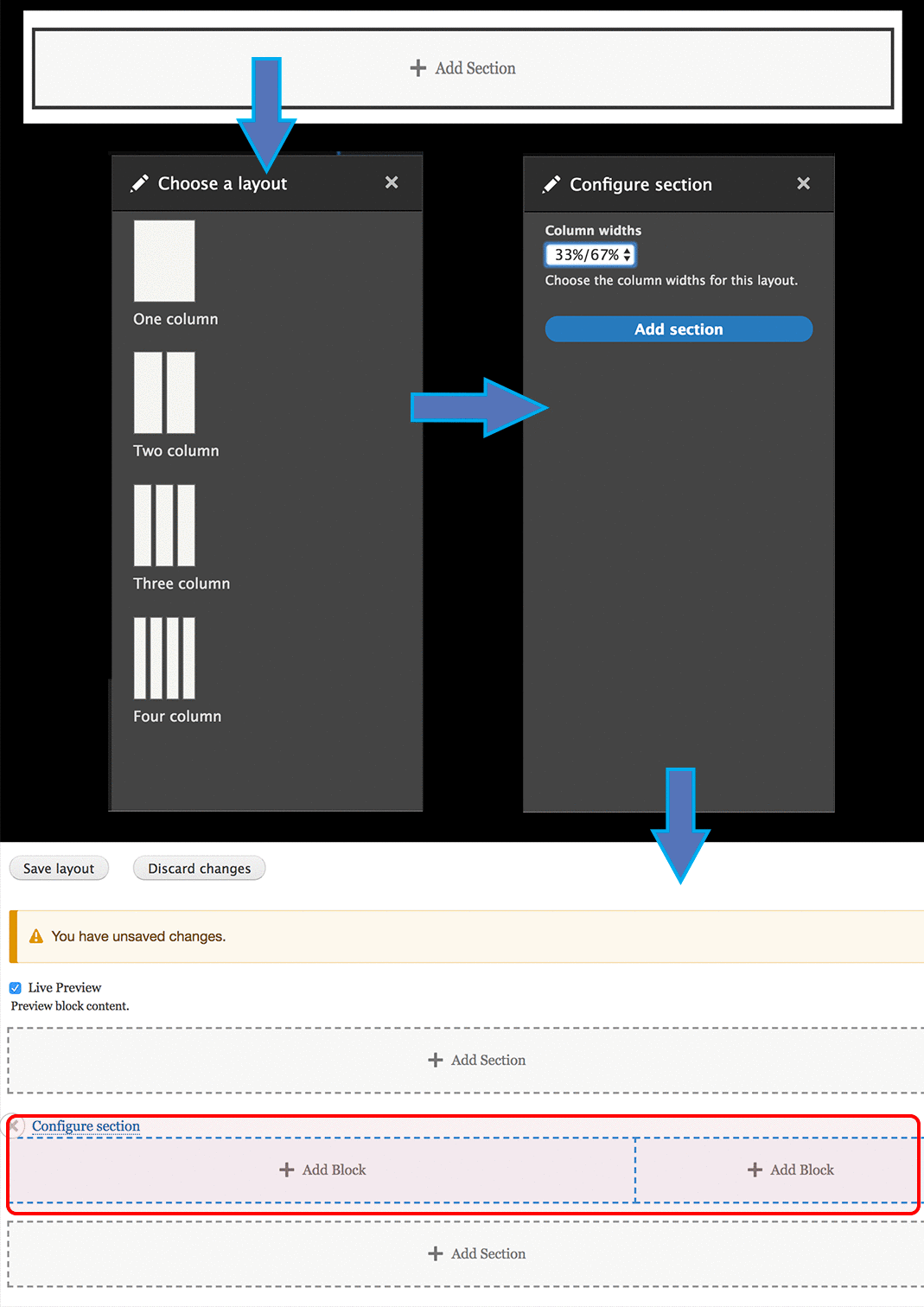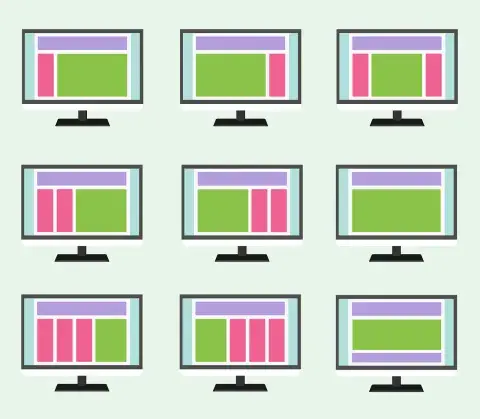There’s no better way of telling which tool best fits your needs than by putting Drupal 8 Layout Builder and Paragraphs to the test, right?
If you were searching for an honest comparison of the 2 Drupal 8 drag and drop page builders, you’re on the right blog.
Because in this post I’ll compare Drupal Layout Builder vs Paragraphs.
What you’ll get is a straight answer to each one of your key questions regarding the 2 most popular page building tools in Drupal:
- Why would you choose Drupal Paragraphs?
- What are its main trade-offs?
- What are its best use cases?
- What are the key advantages of using Drupal 8 Layout Builder?
- What are its limitations?
- What are the use cases of Layout Builder vs Paragraphs?
Now, let’s get you those answers:
1. Drupal Layout Builder vs Paragraphs: Introducing the 2 Contestants
1.1. Drupal Paragraphs
The Paragraphs module was quite a revelation when it was first released.
Why? Because Drupal rocked supreme at enabling users to create template-based pages, but when it came to uniquely designed pages (i.e. landing pages) it started to show its limitations.
And this is where the Paragraphs module came in. It “seduced” Drupal developers with a new component-based approach to building a page’s layout.

Source: Championsdigital.com
The Paragraphs layout builder would allow developers to create individual paragraph types — popup elements, plain text, code blocks — and editors to assemble those paragraphs into highly flexible pages.
Moreover, they could reuse those page components to create new and new content layouts.
For instance, they could put together a page that included one WYSIWYG Paragraph, a Slideshow Paragraph, and one paragraph with both text field and image field...
The idea of “flexible structured content” had taken over the Drupal planet...
1.2. Drupal 8 Layout Builder
The drag and drop page builder in Drupal core designed to take the content editing experience to a new level.
How? By granting editors more control over the Drupal layouts they create.
Drupal 8 Layout Builder enables non-technical users to easily mix and match nodes, fields, and other types of content via a drag-and-drop UI.
They can create their visual layouts and landing pages in no time. All they need to do is drag and drop, then rearrange site-wide blocks and content fields to their liking.

Source: Drupal.org
Moreover, users can even create new custom “inline” blocks of their own.
Power and flexibility combined into one visual design tool aimed at improving the editor experience.
2. What Are Their Key Strengths?
2.1. Drupal Paragraphs
In a Drupal Layout Builder vs Paragraphs “battle”, why would you go with the “stacked components” approach to layout building in Drupal 8?

Source: Drupal.org
- Because the content editing experience is intuitive: editors can use the “Add a popup” and “Add a quote” tabs and rearrange their components with drag and drop
- Because it enables you to group multiple fields into new complex elements
- Because it allows you to come up with an unlimited no. of ways for combining your paragraphs
- Because it enables you to create reusable components that you can then use per node
- Because it prevents the workflow of your nodes from becoming too cluttered by providing an entity type for your sub-page components

Source: Drupal.org
2.2. Drupal 8 Layout Builder
What are its key selling points? Why would you choose Layout Builder over Paragraphs?
- Because it requires less custom code
- Because it grants you a higher level of control over the layouts you’re creating
- Because it grants you lower maintenance costs
- Because you get to mix field content with blocks
- Because you’re free to create and populate new landing pages from the ground up: just set up your custom content blocks and arrange them to your liking within the layout
- Because it provides you with an improved authoring experience
- Because you can extend the default set of layout grids through custom plug-ins
- Because it allows you to keep your structured data
- Because it enables you to get the most of the block system for creating your Drupal layouts: custom inline blocks, programmatic blocks, custom global blocks, custom field blocks
“Blocks” that are fieldable, translatable, templatable, reusable, and part of Drupal core, as well.

Source: Phase2Technology.com
In a nutshell, this Drupal page builder provides both:
- an easy way to manage fielded content in the backend
- the best drag-and-drop editor experience
3. Where Does Each Drupal Page Builder Fall Short?
3.1. Drupal Paragraphs
What could make you… hesitate before choosing the Paragraphs layout builder for creating structured content? What are its key limitations?
- You (your content editors) still depend on a developer to set everything up
- Managing nested paragraphs when dealing with complex layouts can get quite overwhelming

Source: Evolvingweb.ca
And this is the biggest trade-off that could discourage you from going with Paragraphs as your page building tool:
You get to nest/add new and new elements, which carry their own sets of elements, up to the point where this “unlimited nesting” of paragraphs turns into a too confusing interface to cope with.
3.2. Drupal 8 Layout Builder
Where does it fall short?
In a Drupal Layout Builder vs Paragraphs “debate”, which drawbacks of this visual design tool could make you choose Paragraphs instead?
- You might find block content not to be 100% explicitly connected to nodes
- Combining template-based with custom layouts is a bit challenging
- Enforcing a sitewide consistency of your custom-made layouts is quite a dare
4. When Would You Use One Layout/Editing Tool Over the Other?
4.1. Drupal Paragraphs
- When you need to reuse many of the content components on your website to create new pages
- When being able to reuse those components “per node” is of particular importance for your workflow
- When your structured layout does call for nested paragraph bundles
4.2. Drupal 8 Layout Builder
When would you use this particular solution for creating layouts in Drupal 8?
When is Layout Builder a better choice than the paragraphs module?
- When your landing page calls for a grid-like layout, including both dynamic elements (custom blocks, views) and fielded content
- When you need to “juggle with” multiple columns for creating your layout
- When you need to create a fully customed page from the ground up; a “special” page, that’s not connected to any structured content on your website (i.e. a single “Get a Quote” page)
- When you need to custom-tune templated layouts; to override existing page layouts
- When you need to set up “layout templates”, such as the layout for your product page or your blog post page
5. Final Results: Which Approach Best Fits Your Needs?
What do the results of this Drupal Layout Builder vs Paragraphs comparison tell you?
That there’s no “best” Drupal page builder. Only the one that best fits your specific layout creation needs.
It all comes down to the level of diversity in your content:
- If it’s a particularly intricate page layout that you need to create, you might not want to go with Paragraphs. Its nesting feature can turn against you.
- If you’re “craving” flexibility and the content on your Drupal 8 website varies a lot from page to page, yet you still want to keep a level of layout consistency, the Drupal 8 Layout Builder is your best choice
Your turn now: which of these 2 page building tools do you prefer and why?
Let me know in the comments below.
Image by 200 Degrees from Pixabay








